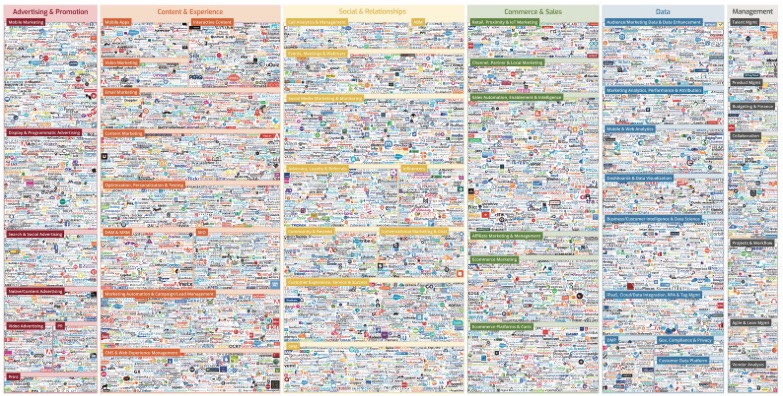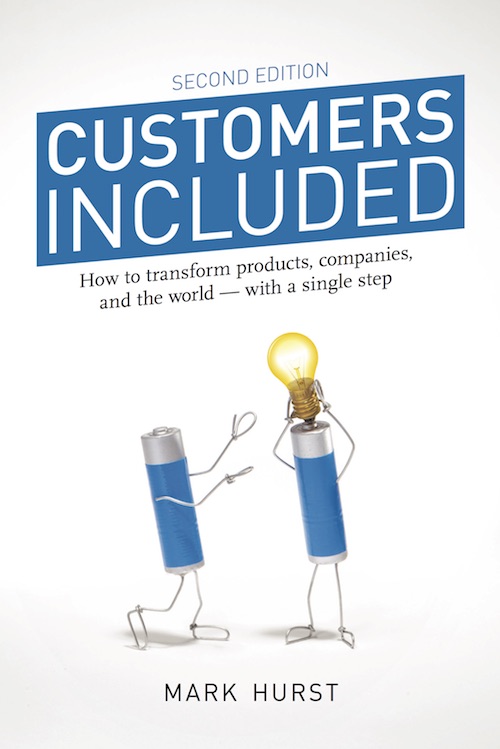Understanding customers is still your job
By Mark Hurst • May 30, 2019
Here's the state of the online marketing industry: a chart showing the logos of companies in the categories of advertising, content, social, commerce, data, and management.

From Martech, via Charlie Warzel
Just a little complicated, right? No one could be expected to parse this chart, called the "Martech 5000," which actually contains over seven thousand companies.
The New York Times' Privacy Project email newsletter (May 28) included this chart, as well as a brief interview with Lisa Macpherson, previously SVP Marketing at Hallmark Cards, now a fellow at Harvard.
Consider these comments from Macpherson (emphasis mine):
• "For all of the privacy invading and data-sucking, the advertising technology isn't all that good at doing what it's supposed to do: help companies understand their customers."
• "As marketers we now have access to our customers in every nook and cranny of their lives. But with more layers of technology between us, we have less insight on what makes them tick."
• "The data shows what people do (and even what they will do), but not why they do it."
I understand Macpherson's frustration, and even her departure from an influential marketing job (assuming those two are connected!). For years now, online product teams have invested in data and dashboards, in surveillance and analysis, in dark patterns and automated understanding. All in the service of observing what customers do, while losing the why in the process.
What happens when we lose the "why"? Products suffer. Teams optimize for local maxima, for false positives in the data, for poorly-analyzed conclusions taken from reams of data - even, as often happens, data that's irrelevant to the key issues.
What's more, all that extra activity and noise in the ad market barely makes any positive difference. The WSJ reports (May 29) that an academic study of online ads found that publishers only get about 4% more revenue for an ad impression that has a cookie enabled than for one that doesn't. For this we launched 7,000 companies to surveil and dehumanize users? (In Google's case, it wasn't about "the 4%" at all. These days, Google needs the data not for ad-targeting but to feed its surveillance-and-control model - see my column We're entering the age of surveillance capitalism.)
I can understand Lisa Macpherson's frustration because I've felt it, too. The decade-long trend of treating users as data points to be optimized, rather than human beings to be listened to, has directly affected me professionally. My own "landscape" of customer experience strategy is the mirror image of the Martech 5000: every year, fewer and fewer independent agencies are available to conduct qualitative research (listening to customers, in person!) and blend it with quantitative analysis to create a viable product strategy.
Creative Good is still here, still offering our customer experience services as always, but it's gotten pretty lonely on our block. One of our competitors sold out to a bank; another got gobbled up by an globalized integrator. Some agencies just aren't around any more. But hey, at least there are 7,000 automated surveillance-and-marketing vendors!
Macpherson's comments - and the fact that they were covered in a NYT newsletter - give me hope that people are beginning to see the flaw in the current model. I wonder if the pendulum, maybe, just maybe, might be swinging in the other direction - back to actual human connection and understanding. Because your job, even in a data-drenched age, is still the same.
To put it bluntly: Understanding customers is still your job.
Data will not magically deliver that understanding. In fact, as Macpherson shows, too much data and tech can prevent you from understanding your customers. You can bury your product decisions in an ocean of dashboard data, but it doesn't change the basic reality: in the long run, given time and competition, the best customer experience will win.
And granted: I understand that the online landscape, being dominated by four Big Tech monopolists, isn't very competitive. I also understand (do I ever!) that surveillance capitalists like Google and Facebook (and increasingly Amazon) see their users as resources to be harvested and discarded, not customers to be served or benefited. There's no winning customer experience there, because the customers don't really exist.
BUT! There are still companies with real paying customers; products that live by creating benefits for their users; they're increasingly rare, but they still exist. And for these companies, the invitation remains: to succeed, understand your customers and build products and services to benefit them.
To understand your customers better, first, read my book Customers Included. Then drop me a line and ask Creative Good to help. It's not too late to turn back from the "privacy invading and data-sucking" and return to the better path: making decisions based on customer understanding. In other words, "customers included."

Customers Included, 2nd edition, by Mark Hurst
- - -